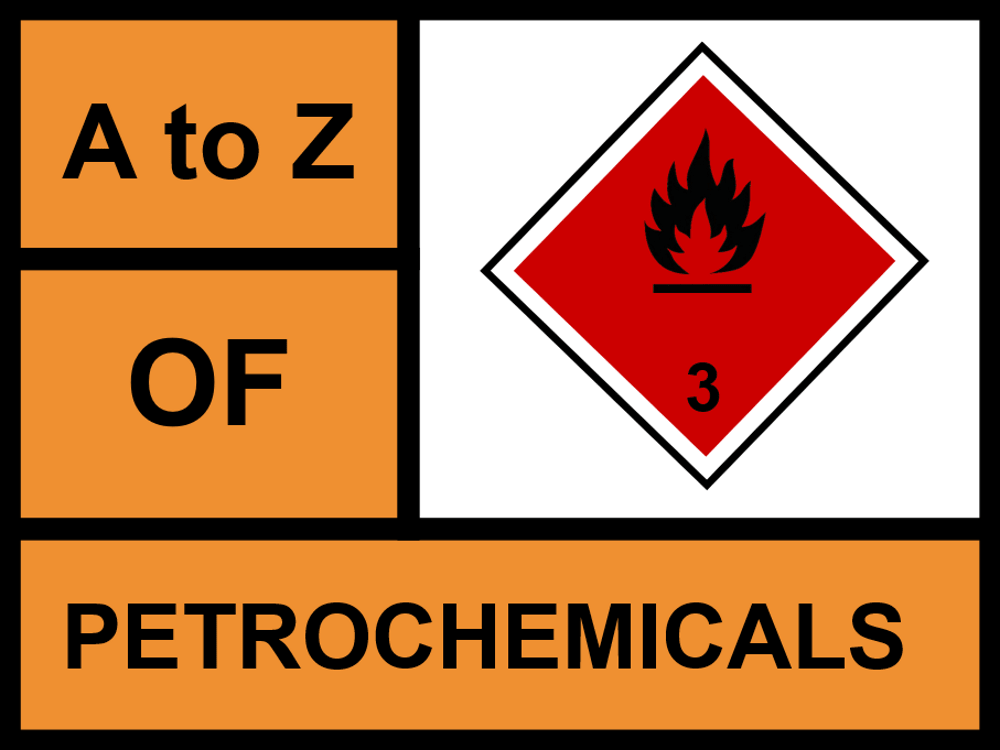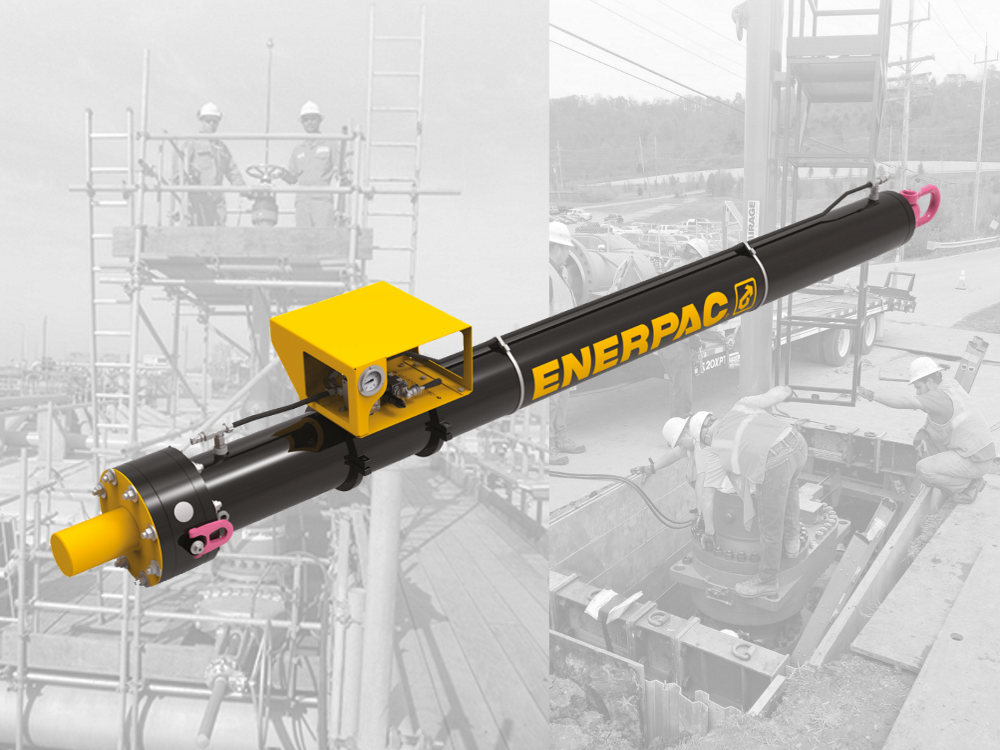Petrochemical Terms

February 15, 2020
0
Having the necessary skills and portable machine tools to carry out on-site machining successfully can open-up interesting and rewarding opportunities in many different industry sectors. But if you’re planning to work at a petrochemical plant for the first time, you may be faced with some unfamiliar petrochemicals terms and jargon that leaves you baffled – and maybe even a little embarrassed.
If you think a ‘cat cracker’ is some kind of pet biscuit, we suggest you read on.
We’ve put together a simple a to z glossary of petrochemicals terms to get you started. But bear in mind this is just a ‘brief’ selection. It’s unlikely an on-site machinist will need to understand the molecular structure of the product that flows through the pipes on-site, but if you want a deeper dive into the world of petrochemicals we’ve provided links at the bottom of this article.
ABS Resin
Acrylonitrile-Butadiene-Styrene copolymer. A group of tough, rigid thermoplastics. Uses include domestic products, automobile and boat parts and fittings, packaging and other items.
Accelerator
A compound that reduces the time for a reaction to take place.
Acetylene
A colorless gas made by cracking hydrocarbons with steam or by partial oxidation of natural gas. It is a by-product of ethylene and used as an industrial gas and to produce vinyl chloride, acrylonitrile, and carbon black.
Additive
A substance added to a base material in low concentrations to perform a specific function such as to preserve, thicken, disperse or colour.
Alkylate
The product of an alkylation reaction. It usually refers to the high-octane product from alkylation units. Used in blending high octane gasoline.
Alpha Olefins
These are major petrochemical building blocks, which serve as polyethylene co-monomers and as reagents to form surfactants, plasticizers, and additives. Derivatives are used in synthetic motor oils for jet engines and automobiles, synthetic lubricants, synthetic drilling fluids, additives for lube oil and the upstream oil industry, paper sizing, flavours, candles, PVC lubes, detergents, and personal care items.
API Gravity
A scale used to express the gravity or density of liquid petroleum products. Calibrated in terms of degrees API.
Aromatics
A highly reactive group of hydrocarbons that enable the production of a wide variety of products. As the name suggests, aromatics have a distinctive odour.
Barrels Per Stream Day
The maximum number of barrels of input that a distillation facility can process within a 24-hour period when running at full capacity under optimal crude and product slate conditions with no allowance for downtime.
Benzene
One of the most important chemical building blocks. Derived from catalytic reforming of naphtha, toluene dealkylation or disproportionation, pygas recovery, and, to a small extent, coal tar. Benzene is a raw material for the production of cumene, cyclohexane and styrene.
Bitumen
A non-crystalline solid or viscous mixture that softens gradually when heated. Obtained from crude petroleum by refining processes.
Blender
A device for mixing two fuel oils to achieve a less viscous and more uniform fuel.
Bonded Petroleum Imports
A facility which has no refining capability but is either capable of producing finished motor gasoline through mechanical blending or blends oxygenates with motor gasoline.
Bore Polishing
Excessive smoothing out of the surface finish of the cylinder bore in an engine to a mirror-like
appearance, resulting in depreciation of ring sealing and oil consumption performance.
BTU British Thermal Unit
The amount of heat required to raise the temperature of 1 pound of water by 1-degree Fahrenheit.
Bulk Station
A facility used primarily for the storage and/or marketing of petroleum products which has a total bulk storage capacity of less than 50,000 barrels and receives its petroleum products by tank car or truck.
Bunker Fuel Oil
Heavy, residual fuel oil used in ships.
Cat Crackers
One of the more common petrochemicals terms. It’s not a snack for your kitten. It’s actually a large refinery vessel for processing reduced crudes or other feedstocks in the presence of a catalyst, as opposed to the older method of thermal cracking, which employs heat and pressure only. Catalytic cracking is generally preferred since it produces less gas and other highly volatile by-products. It produces a motor fuel of higher octane than the thermal process.
Catalytic Cracking
The refining process of breaking down the larger, heavier, and more complex hydrocarbon molecules into simpler and lighter molecules. Catalytic cracking is accomplished using a catalytic agent and is an effective process for increasing the yield of gasoline from crude oil.
Catalytic Hydrocracking
A refining process that uses hydrogen and catalysts with relatively low temperatures and high pressures for converting middle boiling or residual material to high-octane gasoline, reformer charge stock, jet fuel, and/or high-grade fuel oil.
Catalytic Hydrotreating
A refining process for treating petroleum fractions from atmospheric or vacuum distillation units in the presence of catalysts and substantial quantities of hydrogen.
Centrifuge
A machine using centrifugal force produced by high-speed rotation for separating materials of different densities. Applied to Diesel engine fuels and lubricating oils to remove moisture and other extraneous materials.
Clarifier
A machine used for a liquid-sludge separation in which the particles with a higher specific gravity are separated from the lower specific gravity of the liquid.
Commercial
Kerosene-type jet fuel intended for use in commercial aircraft.
See Machining Products for Petrochemicals
Cracked
Refers to a petroleum product produced by a secondary refining process.
Distillation
A common manufacturing process for separation/purification in which a liquid is converted to a vapor and the vapor is then condensed to a liquid.
Elastomers
Polymers characterized by their flexibility and stretch, e.g. rubber.
Extractive Distillation
A type of distillation involving a fractionating column and characterized by use of an additive, often a solvent, which modifies the vaporization characteristics of the materials being processed to make them easier to separate.
Feedstocks
Raw materials required for an industrial process. In the chemical industry, common feedstocks include natural gas or natural gas liquids such as naphtha, gas oil, and ethane. Benzene, ethylene, propylene, and other olefins are examples of feedstocks used as the building blocks to produce value-added petrochemicals.
Flashpoint
The lowest temperature at which a liquid will generate enough vapor to flash (ignite) when exposed to a source of ignition.
Fraction
A separate identifiable part of crude oil; the product of a refining.
Heavy Crude
Crude oil with a high specific gravity and a low API gravity due to the presence of a high proportion of heavy hydrocarbon fractions and metallic content.
Hydrocracking
A refining process in which a heavy oil fraction or wax is treated with hydrogen over a catalyst under relatively high pressure and temperature to give products of lower molecular mass.
Kerosene
A combustible hydrocarbon liquid which is derived from petroleum.
Lifting
Refers to tankers and barges taking on cargoes of oil or refined product at the terminal or trans-shipment point.
Liquefied Petroleum Gases (LPG)
A group of hydrocarbon-based gases derived from crude oil refining or natural gas fractionation. They include ethane, ethylene, propane, propylene, normal butane, butylene, isobutane, and isobutylene. For convenience of transportation, these gases are liquefied through pressurization.

Decommissioning Case Study Pack
Learn how portable machine tools solved four tough decommissioning challenges
Light Crude
Crude oil with a low specific gravity and high API gravity due to the presence of a high proportion of light hydrocarbon fractions and low metallic compound.
Liquefied Petroleum Gas (LPG)
Of the gaseous hydrocarbons, propanes and butanes can be liquefied under relatively low pressure and at ambient temperature. Mixtures of these are known as LPG.
Naphtha
One of three basic hydrocarbon classifications found naturally in crude oil. Naphthenes are widely used as petrochemical feedstock.
Olefins
Class of unsaturated paraffin hydrocarbons recovered from petroleum. Typical examples include: butene, ethylene and propylene.
Special Naphthas
All finished products within the naphtha boiling range that are used as paint thinners, cleaners, or solvents. These products are refined to a specified flash point. Special naphthas include all commercial hexane and cleaning solvents conforming to ASTM Specification D1836 and D484.
Outage
Space left in a product container to allow for expansion during the temperature changes it may undergo during shipment and application.
Petrochemical
An intermediate chemical derived from petroleum, hydrocarbon liquids or natural gas, such as: ethylene, propylene, benzene, toluene and xylene.
Purifier
A machine used for a liquid-liquid separation in which the two intermixed liquids which are insoluble in each other have different specific gravities. A purifier bowl has two outlets; one for the light phase liquid and one for the heavy phase liquid.
Reduced Crude Oil
Crude oil that has undergone at least one distillation process to separate some of the lighter hydrocarbons. Reducing crude lowers its API gravity but increases the handling safety by raising the flash point.
Static Mixer
A motionless mixer which has a series of fixed, geometric elements enclosed within a tubular housing. The internal elements impart flow division and radial mixing to the media flowing through the housing to produce a uniform dilution of the production.
Straight-Run
Refers to a petroleum product produced by the primary distillation of crude oil, free of cracked components.
Thermoplastics
Polymers that can be softened by the application of heat or pressure and can be dissolved into solvents.
Topped Crude Oil
Oil from which the light ends have been removed by a simple refining process. Also referred to as “reduced crude oil”.
Ubbehohde Viscosimeter
A suspended level apparatus for accurately determining the viscosity of a liquid.
Vacuum Distillation
Distillation under reduced pressure (less the atmospheric) which lowers the boiling temperature of the liquid being distilled. This technique with its relatively low temperatures prevents cracking or decomposition of the charge stock.
Viscosity Index (VI)
Usually between 0 and 200, which is a measure of the temperature dependence of an oil’s viscosity.
Take a look at products used for machining in the petrochemicals industry
See Machining Products for Petrochemicals
Petrochemical Terms: Sources:
https://www.alken-murray.com/fuel-glossary.htm
http://www.ecotechlube.com/downloads/GLOSSARY.OF.PETROCHEMICAL.TERMS.pdf
http://www.cpchem.com/en-us/company/pages/glossary.aspx#a
If you have a question about machining products for use in the petrochemicals industry please click here to get in touch.



